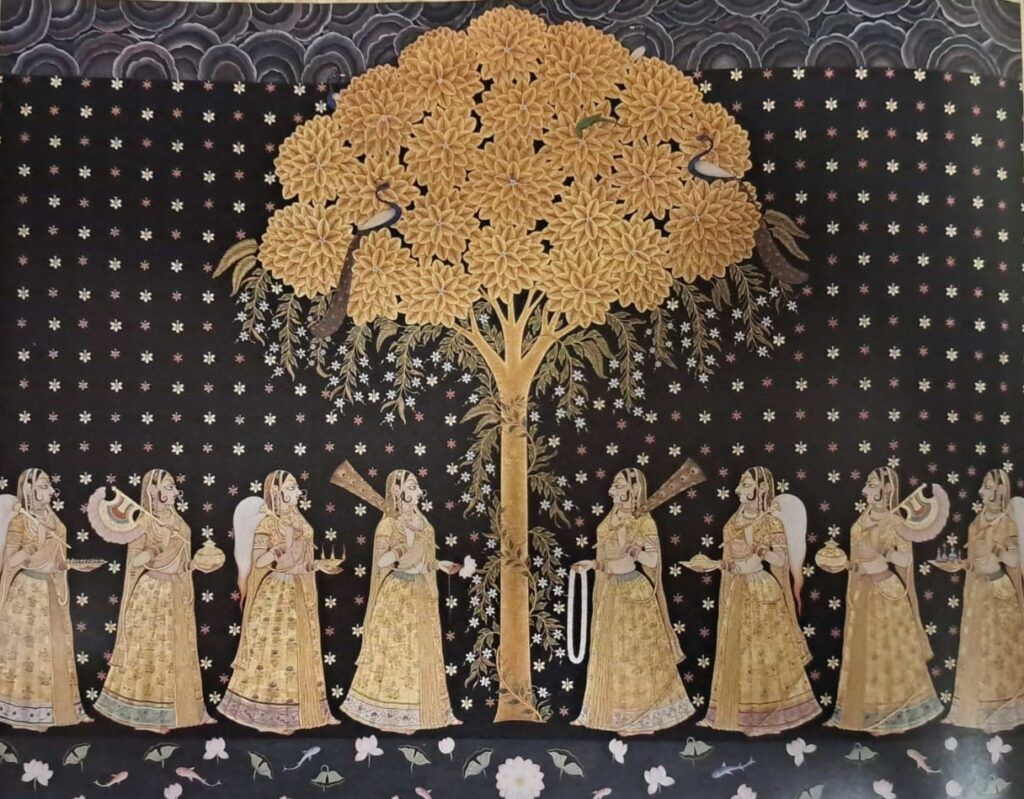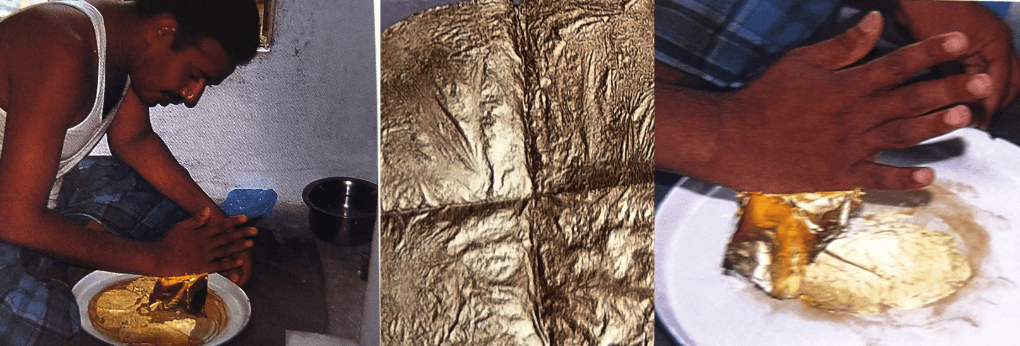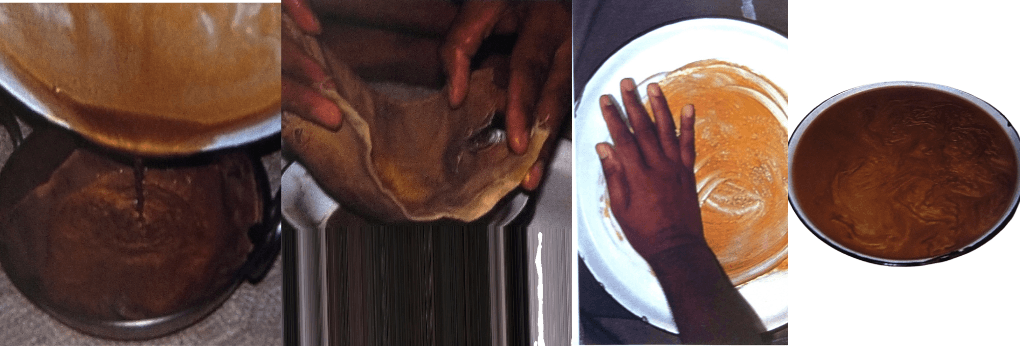
Your Cart
The Intricacies of Golden Pichwais


Although a picture says a thousand words, a Pichwai painting brings life to the epic tales of Lord Krishna, Radha, his gopis, and devotees. The intricacies of the Golden Pichwai painting tradition date back 400 years. It has evolved and adapted to the needs of the time. The artisans hand-painted Pichwais with organic colours, block-printing, or lavishly paint with gold. But as a matter of fact, the practitioners opted for more simplistic and less time-consuming colouring mediums like acrylic.
The Importance of Gold in Pichwai Painting ------------------------------------------
The art experts preferred golden Pichwais for their lavishness and intricate work. As the Nathdwara style developed in the early seventeenth century, it imbibed several Persian techniques. The artisans used gold leaves and paint extensively.
The pure gold Pichwais are not only a rare sight but also surely a striking one. The extravagant artworks did not lose their sheen because of the real gold. The bright gold work against the deep black and red colour cloth mostly did not have Lord Krishna figuratively. The Kadamba tree was a symbol of Lord Krishna's presence.
The Practice of Gold in Pichwai Painting ----------------------------------------
The detailed use of goldwork was an influence of the Persian technique. The technique flourished in the 17th century. The Nathdwara artisans used this technique extensively. Mostly, the garments, intricate architecture, jewellery, and tree leaves are done with gold. The craftsman used gold leaves for large-scale work. They preferred gold paint for miniature painting. The Nathdwara craftsman adopted the Moghul technique called as "veil of gold". This involved applying a gold wash in the background areas to give the painting a warm glow.
Preparation of Gold Leaf ------------------------

A ten-gram gold biscuit yields 160 gold leaves. The craftsman heats the liquid gold and makes thin strips. These are stored in a leather-tanning book. They rigorously beat the book with a wooden mallet. The artists use these delicate leaves in Pichwai paintings.
Preparation of Gold Paint -------------------------

The thin leaves of gold are delicately separated from the leather-tanning book by hand. During the grinding process, the leaf is placed on a plate. The craftsman used gum arabic, distilled water, and approximately 10 gold leaves to make the paint. The artisan will keep grinding the gold leaves for a long time. The leaves dissolve and form a sticky paste. This process consumes around 3-4 hours. They add water to the paste. After boiling, a muslin cloth is used to strain the paste. A flawlessly performed process results in a burnished, royal gold paint.
Craftsmen all over India practice this technique, watch this video to get a deeper understanding.
Now let’s dive into the two most debated Golden Pichwais and their significance. Several art experts and scholars have argued about the origins of these Pichwais. It has left them fascinated. For the first time, the extensively researched piece, Gates of Lord; The Tradition of Krishna Paintings has mentioned the origins of these artworks.
These two Pichwais belong to the Deccan region from the family of Jagjeevandas in Hyderabad.
Varsha Golden Pichwai ---------------------

The beautiful gold work against a red background creates a stunning view. The prominent motif is the Kadamba tree in the centre which signifies the presence of Lord Krishna. This represents the mischievous story of Lord Krishna hiding in the bushes after stealing the clothes of gopis who were bathing at the banks of the Yamuna river. At the top, you notice the detailed work of gold used to symbolize the sun with a background of dark, heavy clouds ready for a downpour. We can notice Lord Krishna’s beloved gopis around the Kadamba tree along with peacock feathers in their hands. The cows and peacock feathers are an integral part of Pichwai painting. The bottom of the Pichwai showcases a herd of cows walking by along with herdsmen. The spectacular piece of textile has small golden flowers all over the backdrop.
The most striking element we can notice is the Kadamba tree leaves outlined with gold.
Vrikshchari Golden Pichwai ---------------------------

The Vrikshchari Pichwai displays a crescent moon and a beaming sun in the open sky. We notice the gopis with peacock feathers and lighted lamps. The most surprising element is that you catch a glimpse of Lord Krishna in royal blue colour playing his flute. The Pichwai has a floral border and contains different styles of leaves as seen intricately in golden colour. The Deccani style of work was exemplary. It was mostly in pitch black background and gold paint details.
Golden Pichwais stood out amongst the other styles for its lavish use of real gold in paintings. These gold foil work Pichwais are a symbol of royalty and extravagance. "The traditions of gold were venerated as a symbol of divine light. Its presence brought grace and beauty to the painting"( Citation- Desmond Lazaro; The Pichvai Painting Tradition of Rajasthan).
To know more about Golden Pichwais or the history of Pichwai painting follow Rooftop
Citation : Madhuvanti Ghose; Gates of Lord, Tradition of Krishna Paintings
: Desmond Lazaro;The Pichvai Painting Tradition of Rajasthan